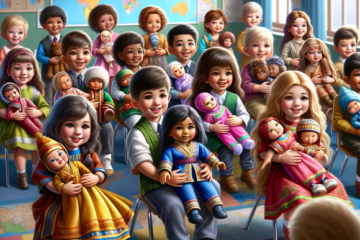In recent years, discussions surrounding cultural appropriation have ignited debates across various platforms, ranging from fashion to art. One particularly intriguing aspect of this discourse is the representation of different cultures in dolls, especially concerning their attire and traditions. This article aims to delve into the complexities surrounding this topic, examining the impact of cultural appropriation through the lens of these miniature representations.
Dolls have always been more than just playthings; they reflect societal norms, cultural values, and aesthetic preferences. However, when dolls are designed to emulate the attire or traditions of cultures outside the creator’s own, questions of respect, authenticity, and exploitation arise. The line between appreciation and appropriation becomes blurred, prompting reflection on the intentions behind such representations.
One key concern is the potential reduction of rich cultural traditions into mere commodities. When dolls adorned in the attire of specific cultures are mass-produced for profit, there is a risk of diminishing the significance and symbolism behind these garments. What’s more, the lack of consultation or involvement of individuals from the represented cultures further exacerbates the issue, perpetuating stereotypes and inaccuracies.
Moreover, the power dynamics inherent in cultural appropriation cannot be ignored. Often, the cultures being appropriated are those of marginalized communities, whose voices are frequently disregarded in mainstream discourse. This imbalance of power reinforces existing inequalities, as dominant cultures profit from the cultural heritage of others without acknowledging their contributions or experiences.
However, it’s crucial to recognize that not all instances of cultural representation in dolls are inherently problematic. When done with sensitivity, authenticity, and with the involvement of members from the respective cultures, such representations can foster cross-cultural understanding and appreciation. Collaborations between doll designers and cultural consultants can ensure that the portrayal is respectful, accurate, and educative, rather than exploitative.
Furthermore, dolls have the potential to be powerful tools for cultural exchange and celebration when used appropriately. They can serve as ambassadors of diversity, helping children develop an appreciation for different cultures from a young age. By providing opportunities for dialogue, learning, and empathy, these dolls can contribute positively to promoting cultural understanding and acceptance.
In conclusion, the issue of cultural appropriation in dolls representing attire or traditions from various cultures is multifaceted and nuanced. While some representations may perpetuate harmful stereotypes and exploit cultural heritage for profit, others have the potential to foster meaningful cross-cultural dialogue and understanding. Moving forward, it is essential for creators, consumers, and stakeholders alike to approach these representations with sensitivity, respect, and a commitment to authenticity and inclusivity. Only through collaborative efforts and mutual respect can we navigate the complexities of cultural representation in dolls and promote a more inclusive and equitable society.



0 Comments